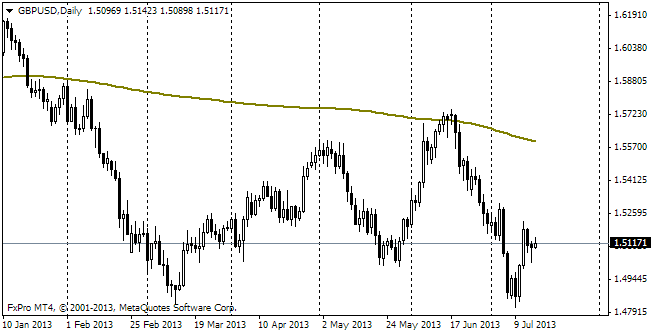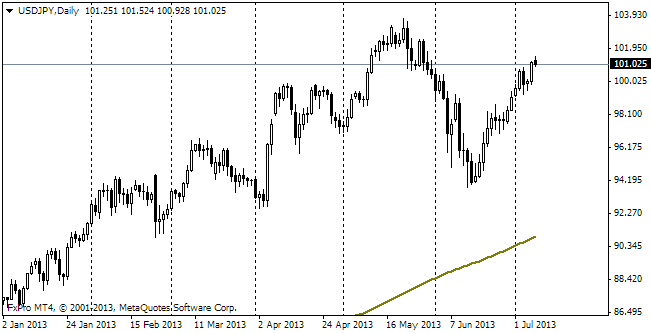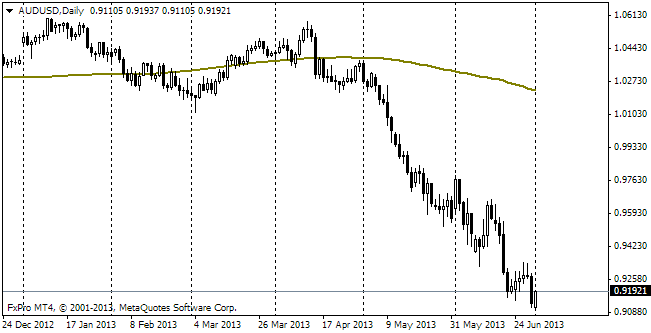EUR/usd
The single currency hit a fresh local low, falling down to 1.3108, but bears were not strong enough to test 1.31. We should say that despite the expected beginning of the ECB's QE on Thursday, the single currency is depreciating against the dollar much less than its rivals like the pound, yen and the aussie (read below). Today the main risk for the pair is posed by the Final Services PMI. If this index has been considerably revised in comparison with the preliminary data, it may affect the course of trading. Unfortunately for the euro, now there are plenty of downward risks for the indicator, as with time the EU business feels stronger and stronger the effect of the bilateral sanctions with Russia and growing geopolitical risks in the region. Among technical levels, 1.31 is of interest – if broken, it will open the way below 1.3050. The levels of 1.3180 and 1.3240 should be considered as possible target levels in case of correction. 1.3240 will mean closure of the gap formed two weeks ago. But upon the whole we expect to see eurusd close to 1.34 in the coming days/weeks.
GBP/USD
The British currency keeps depreciating in view of the real threat of Scotland's secession from the UK. Though its advocates have never made the majority according to the surveys, the recent data showed a sudden increase in the number of those who say ‘yes'. It is difficult to imagine the scale of the market reaction in case of the positive decision regarding the case, but it is clear that the cable will suffer huge losses should it happen. Now trading is held at 1.6450 and it is the lowest level since February. As has been mentioned since spring, the sterling hasn't been steady at 1.70 in the recent years. Should the downward pressure strengthen, the British currency will be able to go as low as 1.50. But an obstacle can be posed by confident economic growth and, as a result, by toughening of the BOE's monetary policy.

USD/JPY
The yen keeps falling against the dollar and most other currencies. usdjpy has closely approached the yearly highs. The dynamics is really of interest. Triggering of stop orders, caused by breaking through the multi-month flat, hasn't eased the bears' pressure. Purchasing continued all through the day yesterday and today the rising support line is also clearly seen. Now trading is held at 105.20 and the yearly high makes 105.43. If purchasing continues this way, later today or in a day the bulls will again manage to hit the jackpot above 105.50. This state of affairs is accounted for by stronger demand for risky assets, where the yen has again gained the status of a funding currency. But this situation again forms a threat of sharp appreciation of the Japanese domestic currency during the market correction and exporters will at once have to deal with lull in sales and with decreasing competitiveness.

AUD/USD
The Australian GDP grew by 0.5% in the second quarter, and the yearly growth makes impressive 3.1%. Both these indicators have exceeded the expectations and form solid grounds for comparison with the performance of other developed economies, where growth above 3% is a golden dream. Anyway, it hasn't saved the Aussie from decline. Under the spell of the general sentiment for growth of the US dollar, the Aussie after a short-term reaction to the news has resumed its depreciation. Yesterday the pair was pushed below 0.93 and is still pushed off this level, being kept near 0.9270. The nearest support can be found at 0.9250 and 0.9230. The latter has been a strong defensive line already since April, so should it be broken, there can be a powerful movement down.
